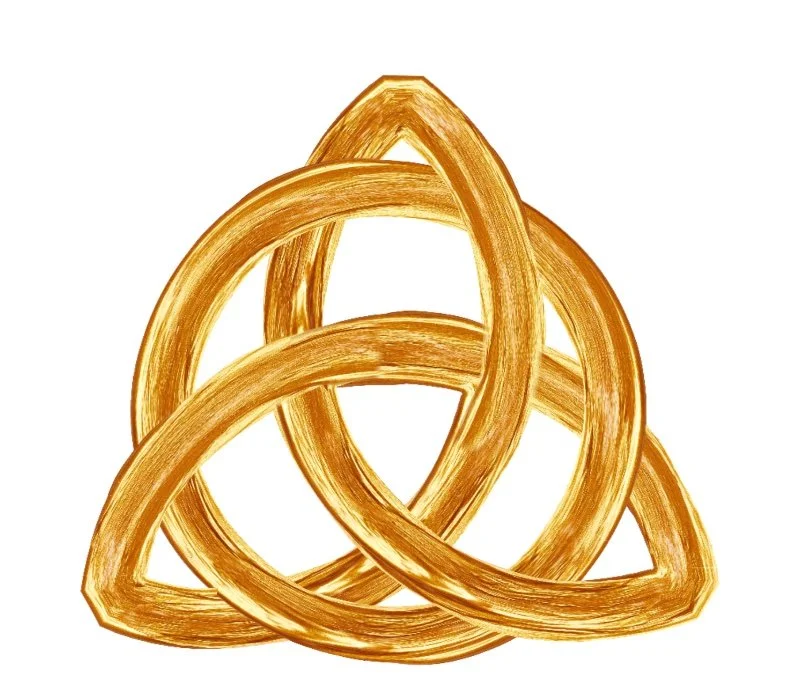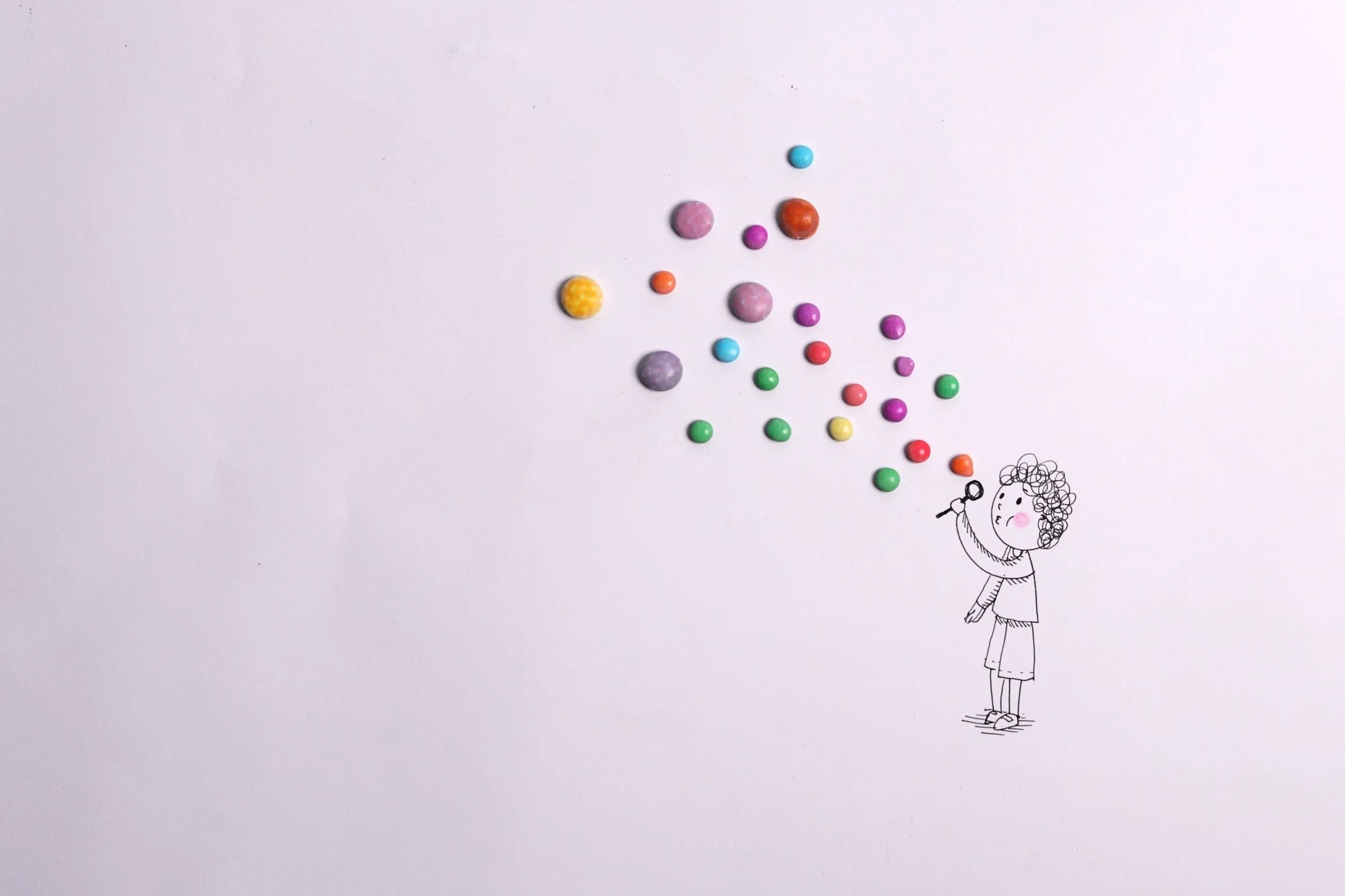The Power of Three
/Three always has been my favorite number. I don’t have many forever favorites in life. The kind of ice cream I love changes from summer to summer: Last summer I was into the fruity flavors – Sebastian Joe’s Raspberry Chocolate Chip, yum! This summer, not so much. Every time I go on vacation with my family, I encounter a new “favorite” place I’d like to live. Even the love for my “favorite” new pair of shoes or jeans seems to fade fast.
My affinity, however, for the number three remains strong. Perhaps it's because I grew up in a church where the mystery of the Trinity was an integral part of my spiritual development. Perhaps it’s because geometry and triangles were my favorite things to study in school when I was a kid. Who knows? But what I do know is that this oh-so-special number three, consistently calls to me, intrigues me, serves as my compass throughout life.
The number three seems to follow me - or maybe I keep seeking it. When my husband and I started dating, I thought our relationship was fated. When I picked him up for our first date, I noticed his address was: 3936.
Wow! Destiny! All threes or multiples of three! This is a sign for sure, I thought.
You get it - the number three and I have a strong connection. It strengthened even more profoundly when my practice of yoga deepened, and then I began to teach and seek more continuing-education opportunities, primarily within the aspects of meditation and pranayama. It felt to me like a calling to augment my understanding of these two characteristics within yoga. And as I did, sure enough, the number three was everywhere.
The ancient art and practice of the 8-limbed path of yoga, of which pranayama is an integral branch, focuses on this three-part connection of body, mind, and breath (or spirit) - three integral components or ingredients that lead to a solid, growing, and focused yoga practice. These three facets of our practice are undeniably connected, interwoven, and entangled even if we are not consciously aware of their triangulation with each other.
In pranayama, the power of three goes even deeper into how we embody this practice. Here are some examples of pranayama techniques that are powerful compliments to one’s physical and energetic yoga practice. These powerful practices in and of themselves, represent powerfully the mysterious, auspicious, and fascinating number three.
Dirgha Pranayama: Three-Part Breath
In this yoga pranayama technique, we absorb the breath into our body in three stages or parts. We let the breath rise, as we inhale from our belly to our ribs, to our heart, and then we release in the opposite direction, from heart, to ribs, to belly. Three parts equally absorbing, expanding and welcoming the breath. We can even be playful and reverse the technique, breathing in from heart, to ribs, to belly and then again in contrast, exhaling from belly, to ribs, to heart – not the typical, tried, and true way of incorporating Dirgha Pranayama, but three parts nonetheless.
Nadi Shodhana and Ardha Sarira: Alternate-Nostril Breathing and Side-Body Breath
In these specific breath practices, we have a rhythm of inhale/pause, exhale/pause, thus creating a triangle of focus between our in-breath, our out-breath, and the pauses in-between. To practice Nadi Shodhana we inhale through our right nostril, allow the breath to move into the left hemisphere of our brain, pause with the breath resting in the space connecting our two lobes, the corpus callosum, and then exhale our breath from our right hemisphere out the left nostril. We continue this pranayama technique, alternating from side to side, hemisphere to hemisphere. In essence, we find ourselves providing a flossing of the brain’s awareness, a balancing of left to right, a symmetry within the linear and non-linear lobes.
Ardha Sarira is similar, yet in this pranayama technique the focused breath travels the length and breadth of our whole body - from side to side, front to back, top to bottom, inside and out. We again find the number three incorporated as we mind the inhales, exhales, and pauses. During Ardha Sarira we inhale our breath from the bottom of left foot or leg, up the left side body, pausing again at that bundle of nerve fibers called the corpus callosum, and then exhale our breath down the right-side body, all the way to the bottom of right foot or leg. As one practices you can continue in this circle patterning of breath or alternate from side to side depending on what outcome you are hoping to achieve. Welcoming breath into the left-side body gives the message to our parasympathetic nervous system to calm and bring ease whereas stimulating breath into the right-side body activates or invigorates, bringing a stronger sense of action.
This number three, as it relates to breath, can be represented even more interestingly and specifically within our own bodies. We have three breathing spaces in our torso: lower-breathing space (pelvis and low abdomen), middle- breathing space (from solar plexus to our heart), and upper-breathing space (from upper heart to throat). Our feet – heel, middle, and balls of feet – along with our face and hands coincidentally represent these three breathing spaces. For example, when we nestle our weight onto our heels, we engage with the deeper lower- breathing space, signifying calm, steadiness, and solid grounding. Up on the balls of our feet brings action just like the breathing we do in our upper-breathing space when frightened, out of breath, agitated, or in action results in shallower breath. As we feel balanced and settled, focused and composed, we find our weight in the middle of our feet and our middle-breathing space – solar plexus, heart, and ribs. The body feels open, full, and fluid not only with breath but also with awareness primed and keenly fine-tuned.
The ancient Greek philosopher Pythagoras postulated that the meaning behind numbers was deeply significant. In his eyes the number three was considered to be the perfect number, the number of harmony, wisdom, and understanding. It was the number of time – past, present, future; birth, life, death, and beginning, middle, end. It was the number of the divine: Triads of deities in ancient Egypt signified a complete religious system. The basic symbol for plurality among ancient Egyptians was the number three, and it has been recognized throughout the ages by the three main pyramids of Giza.
Celtic Trinity Knot
Triplication can be found in the Celtic religious iconography of Ireland and Wales and is thought to symbolize humankind’s transitions through youth, maturity, and old age. In Chinese culture the number three is considered to be lucky, given its similarity in sound to the word in Chinese language meaning birth. Similar to Celtic traditions and beliefs, in Chinese culture the number three also represents the stages humans pass through in life: birth, marriage, and death.
Om: a two letter word with three syllables
One of the most common, simple, and powerful chants we find in yoga is the word Om. Om is a two-letter word but when pronounced has three syllables: ah – oh – oom. This extraordinarily powerful little word vibrationally connects the chanter of these three syllables to the all-pervasive and unyielding resonating sound of the universe itself.
The number three.... I guess I am in good company with historians, philosophers, and yogis who shared and continue to share this lust, curiosity, and marvel for it. Take this lucky number with you – on the golf course, on vacation, to church, and in your prayers and intentions each day. But most important, as a yogi, take and keep the number three as an integral part of your yoga and pranayama practices. Continue to nurture your overall yoga practice with this ancient and pivotal practice of breath, an integral branch of the 8-limbed path. Happy breathing!















